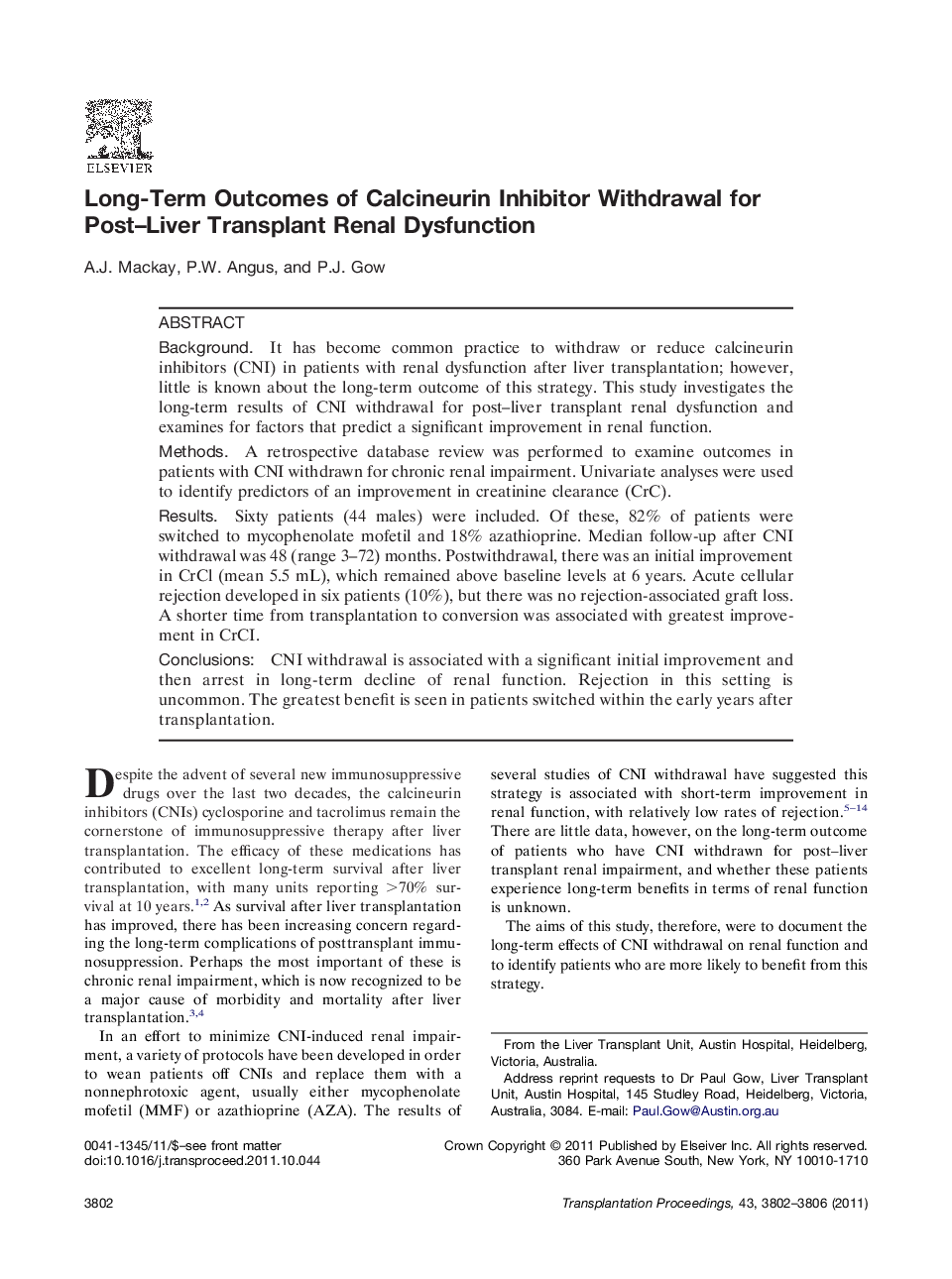| Article ID | Journal | Published Year | Pages | File Type |
|---|---|---|---|---|
| 6248985 | Transplantation Proceedings | 2011 | 5 Pages |
BackgroundIt has become common practice to withdraw or reduce calcineurin inhibitors (CNI) in patients with renal dysfunction after liver transplantation; however, little is known about the long-term outcome of this strategy. This study investigates the long-term results of CNI withdrawal for post-liver transplant renal dysfunction and examines for factors that predict a significant improvement in renal function.MethodsA retrospective database review was performed to examine outcomes in patients with CNI withdrawn for chronic renal impairment. Univariate analyses were used to identify predictors of an improvement in creatinine clearance (CrC).ResultsSixty patients (44 males) were included. Of these, 82% of patients were switched to mycophenolate mofetil and 18% azathioprine. Median follow-up after CNI withdrawal was 48 (range 3-72) months. Postwithdrawal, there was an initial improvement in CrCl (mean 5.5 mL), which remained above baseline levels at 6 years. Acute cellular rejection developed in six patients (10%), but there was no rejection-associated graft loss. A shorter time from transplantation to conversion was associated with greatest improvement in CrCI.ConclusionsCNI withdrawal is associated with a significant initial improvement and then arrest in long-term decline of renal function. Rejection in this setting is uncommon. The greatest benefit is seen in patients switched within the early years after transplantation.
